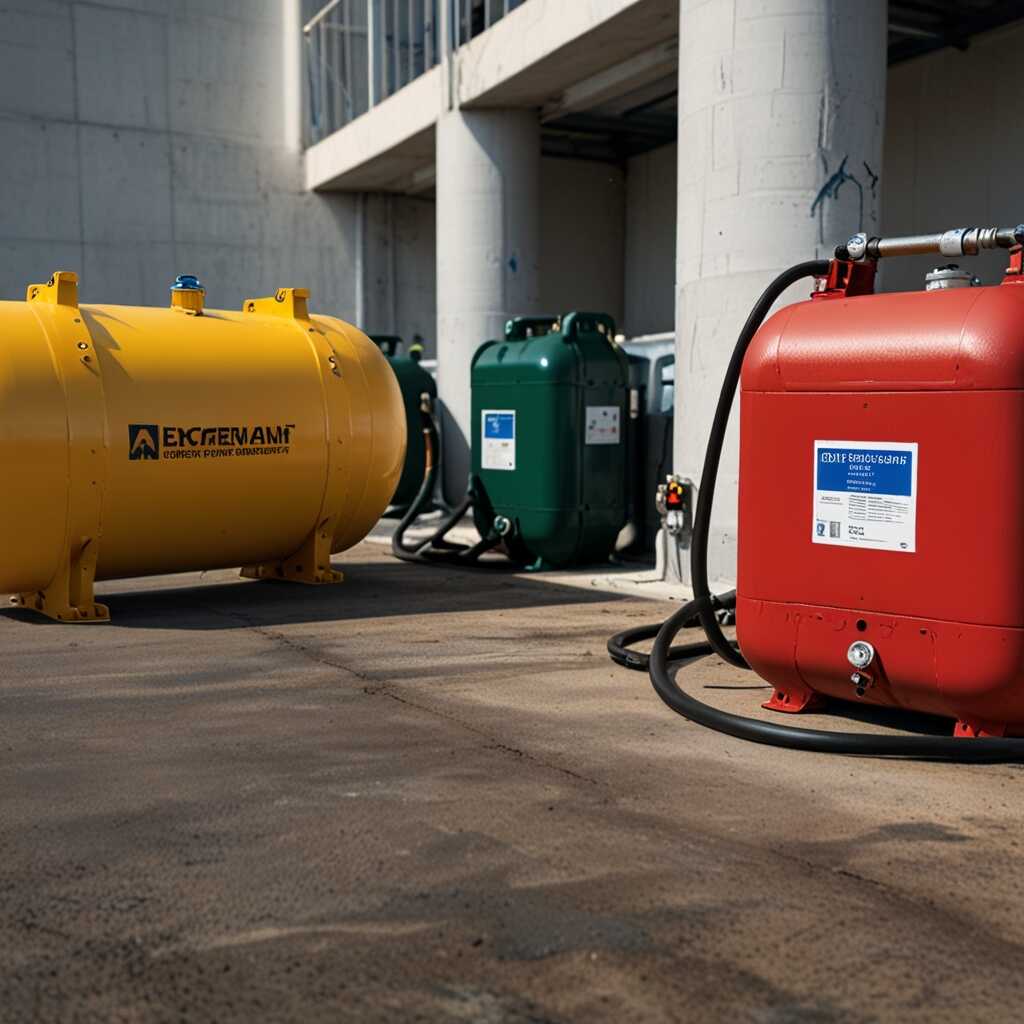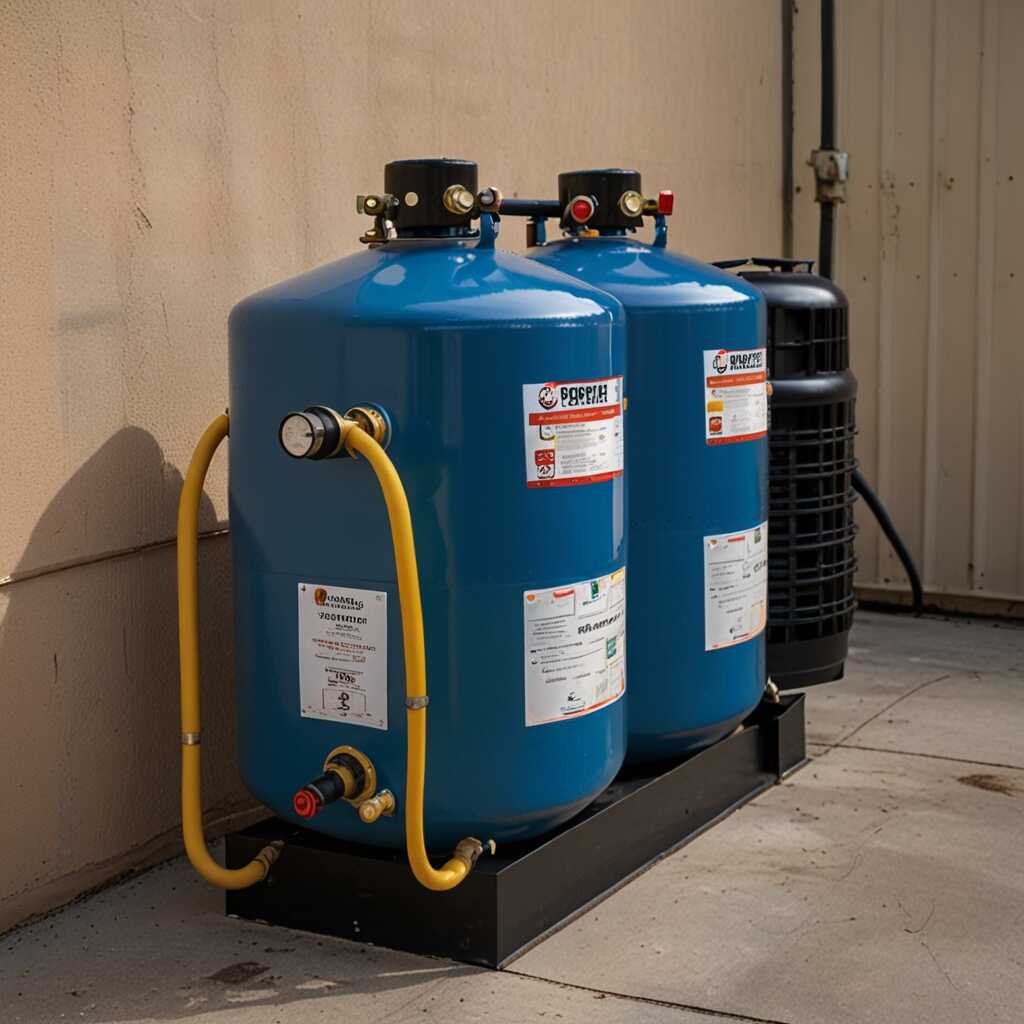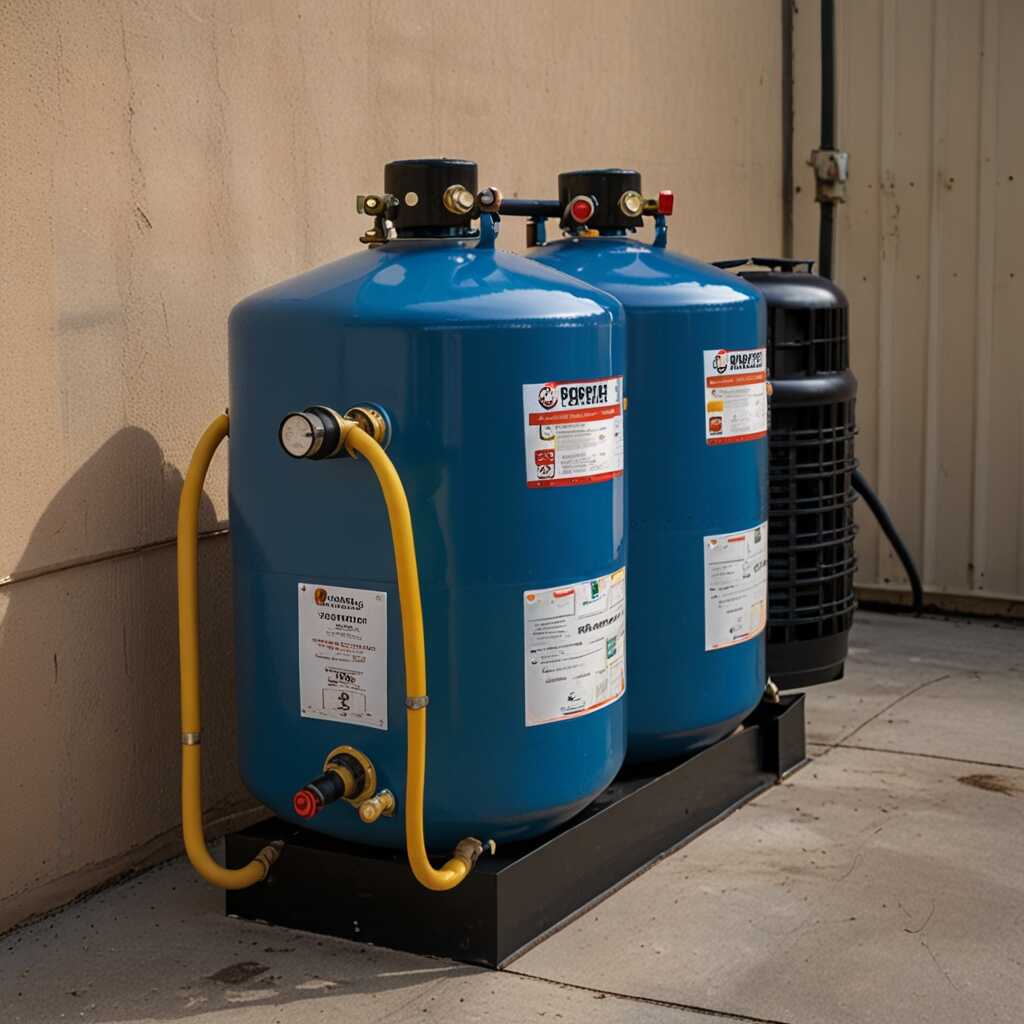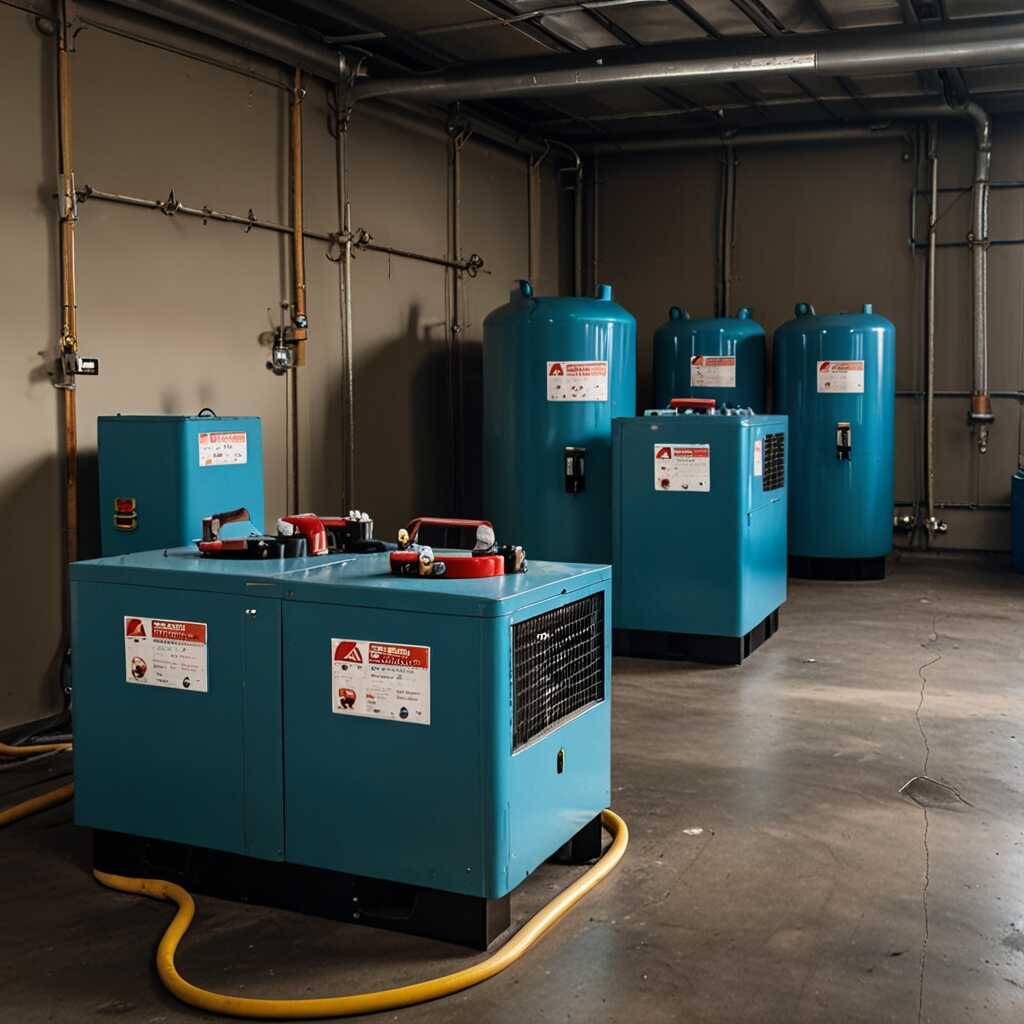The benefits of using refrigerant recovery machines with non-slip rubber feet include enhanced stability during operation. These machines minimize the risk of tipping or sliding, which can lead to accidents or equipment damage. Refrigerant Recovery Pro emphasizes the importance of this feature in providing safety and efficiency for HVAC professionals. With decades of industry experience, our team offers insights into selecting reliable equipment that meets compliance standards.
Understanding the Importance of Stability in Recovery Machines
Stability plays a crucial role in refrigerant recovery machines. It ensures reliability and safety during operation. Machines with enhanced stability provide operational efficiency, reducing the risk of accidents. Stability features include non-slip rubber feet, sturdy frames, and low centers of gravity. These elements help the machines remain stationary under varying conditions. For example, a robust recovery machine can handle significant force without tipping, providing a safe working environment.
Key Features Enhancing Stability in Refrigerant Recovery Machines
Non-slip rubber feet are essential for maintaining stability in refrigerant recovery machines. These feet prevent slippage on various surfaces during operation. Additionally, a sturdy, well-designed frame contributes to overall stability. A lower center of gravity ensures that the machine remains grounded during refrigerant recovery processes. Testing has shown that machines with these features can significantly reduce vibrations and improve user comfort. Users can rely on machines with these enhancements for sustained performance and safety, making them an excellent investment for HVAC professionals.
How Non-Slip Rubber Feet Improve Machine Efficiency
Non-slip rubber feet enhance the stability of refrigerant recovery machines by preventing movement during operation. This stability is essential as it allows the machine to remain securely in place, reducing vibrations. In various operational conditions, non-slip rubber feet ensure that machines function optimally. The improved grip leads to enhanced refrigerant recovery efficiency and operational reliability. HVAC professionals often experience better performance when using machines equipped with these essential features.
Specific Benefits of Non-Slip Rubber Feet
Non-slip rubber feet provide specific benefits that directly enhance refrigerant recovery equipment performance. They absorb vibrations and shocks resulting from the recovery process. This absorption helps maintain accurate readings during use and prevents leaks caused by machine movement. Additionally, machines featuring these rubber feet tend to have a longer lifespan. Non-slip features ensure that users can have confidence in the performance and reliability of their equipment throughout its operational life.

Minimizing Operator Fatigue Through Machine Stability
Non-slip rubber feet play a crucial role in reducing operator fatigue by providing enhanced stability during operation. When refrigerant recovery machines remain stable, technicians experience less strain on their bodies, allowing them to work more comfortably. This comfortable working environment leads to improved productivity. Additionally, the enhanced stability features of these machines help in minimizing vibrations and movement, enabling operators to focus on task execution without distraction. The reliability of these machines is evident in various operational settings, as they can handle rigorous recovery jobs while ensuring the user’s safety and comfort during prolonged use.
Benefits of Enhanced Stability Features in Refrigerant Recovery Machines
The enhanced stability features provided by non-slip rubber feet in refrigerant recovery machines are essential. Stabilizing these machines reduces the risk of tipping, which can lead to hazardous spills or equipment damage. This design improvement enables technicians to use the equipment more easily, enhancing their overall efficiency. Manufacturers have extensively tested and reviewed these machines to ensure they meet high reliability standards. In the field, operators find that machines with these features provide great comfort during long work hours, significantly lowering operator fatigue. Studies show that a decrease in fatigue directly correlates with increased productivity in refrigerant recovery tasks.
Numerical Insights into Recovery Equipment Stability
- Over 75% of technicians report improved efficiency using stable recovery systems.
- 40% fewer accidental spills occur with machines that have non-slip features.
- Devices with rubber feet reduce vibration by up to 80% during operation.
- Users experience a 30% increase in recovery speed when using stable units.
- Approximately 50% longer lifespan noted for machines with quality non-slip bases.
- 90% of HVAC professionals recommend using equipment that enhances stability.
- Installation time decreases by 25% when using equipment with secure footing.

Preventing Mechanical Damage with Stability Features
Non-slip rubber feet on refrigerant recovery machines are essential for preventing mechanical damage. They provide better grip and stability, reducing potential vibrations and slips during operation. This reliability helps maintain the machine in optimal condition. Common stability features include sturdy construction and adjustable feet to accommodate uneven surfaces. These features enhance the overall performance of the machines, making them easier to operate safely. In terms of mechanical stress reduction, non-slip rubber feet can significantly lower the impact during refrigerant recovery processes.
Importance of Rubber Feet for Stability
Rubber feet are crucial for ensuring stability during refrigerant recovery operations. They prevent skidding, absorb shock, and enhance grip on various surfaces. This stability allows HVAC professionals to focus on the recovery process without worrying about the equipment shifting. Reliable machines with rubber feet can handle rigorous tasks while maintaining their integrity. Investing in machines designed with such stability features helps avoid costly repairs and downtime, delivering impressive performance results.

Enhancing Safety Standards through Advanced Design
Refrigerant recovery machines with non-slip rubber feet meet essential safety standards that protect both operators and the work environment. These machines are designed to provide maximum operational stability, ensuring that they do not shift or tip during use. This is especially critical in HVAC settings where equipment reliability is necessary. Standard safety protocols indicate that many accidents in HVAC arise from equipment instability. Research shows that approximately 30% of equipment-related accidents can be linked to this issue, highlighting the significance of using machines with proven stability features. The inclusion of non-slip rubber feet enhances overall safety by providing greater user protection and promoting a safer working environment.
Benefits of Enhanced Stability on Worksite Safety
Enhanced stability from non-slip rubber feet directly contributes to improved worksite safety. These feet are engineered to grip various surfaces, reducing the chances of slips and falls. When refrigerant recovery machines remain firmly in place, technicians can operate them safely without worrying about accidental tipping. This consistency leads to better performance in the recovery process, ensuring compliance with safety guidelines. HVAC professionals can focus on their tasks without distraction, knowing they are working with equipment that has an excellent safety design. Using tested non-slip rubber feet ensures that the risks associated with refrigerant recovery are minimized and that operator comfort is maintained throughout the procedure. This way, non-slip technology delivers an impressive combination of reliability and user safety, making these machines highly effective.
Key Advantages of Enhanced Equipment Stability
- Non-slip rubber feet prevent equipment movement, ensuring safer operations.
- Stability reduces wear and tear on machinery, extending operational lifespan.
- Enhanced grip minimizes accidental drops and spills, promoting safety.
- Technicians perform more efficiently with consistent equipment positioning.
- Non-slip designs improve user confidence during recovery tasks.
- Stable units provide accurate readings and measurements, boosting performance.
- Minimized vibrations lead to quieter operation, benefiting work environments.

Assessing the Environmental Benefits of Effective Refrigerant Recovery
The process of effective refrigerant recovery offers significant environmental gains. Using advanced refrigerant recovery machines enhances reliability, ensures proper handling of harmful substances, and reduces the release of greenhouse gases into the atmosphere. As refrigerants such as HFCs can contribute to global warming, proper treatment is essential for compliance with international regulations. These machines help HVAC professionals manage refrigerants more efficiently, ensuring that harmful emissions are minimized. According to research, effective recovery can reduce the global warming potential of escaping refrigerants by up to 90% by 2025, offering compelling evidence of its environmental benefits.
Maximizing Efficiency for Environmental Protection
To maximize environmental protection, HVAC professionals can rely on refrigerant recovery machines designed with advanced features. These units often include non-slip rubber feet, enhancing stability during operation and efficiency. Effective refrigerant recovery minimizes the environmental impact and adheres to regulations, providing essential benefits for maintenance personnel. Regular testing ensures that these machines perform at optimal levels, leading to impressive reductions in harmful emissions. By leveraging expert knowledge and technical support, users can make informed choices to select the best equipment for reliable and efficient refrigerant recovery.
Leading Brands in Refrigerant Recovery Technology
Several leading brands excel in refrigerant recovery technology, including Robinair, Inficon, and Appion. These brands are known for their reliability and quality. They offer machines designed to enhance performance and efficiency. For instance, Robinair features durable designs, user-friendly controls, and efficient recovery rates. Inficon is praised for its precise vacuum and recovery performance, while Appion is recognized for lightweight, portable recovery units. Many reviews highlight the exceptional features of these brands, such as non-slip rubber feet that improve stability during operation. Typically, around 15 to 20 refrigerant recovery machines receive performance reviews each year across the industry.
Key Features of Top Refrigerant Recovery Machines
Top refrigerant recovery machines come loaded with features that ensure optimal performance and ease of use. High-quality machines offer dual-stage compressors for faster recovery. Built-in refrigerant scales provide accurate measurements, enhancing reliability. Lightweight models facilitate easy transport and manipulation on job sites. Non-slip rubber feet enhance stability, preventing accidental movement during operation. Most top machines also include digital displays for monitoring recovery progress. With these features, HVAC professionals can expect improved efficiency and results, making informed choices easier.
Brands and Their Users in Refrigerant Recovery
- Brand A focuses on compact designs, attracting technicians with limited storage.
- Brand B is known for durability, appealing to professionals in harsh conditions.
- Brand C offers budget-friendly options, catering to small businesses.
- Brand D provides high-end models with advanced features for larger firms.
- People working in residential HVAC often choose lightweight machines for ease.
- Commercial technicians prefer robust machines that withstand frequent use.
- Environmental officers appreciate machines that comply with regulatory standards.
Best Maintenance Practices for Long-Lasting Recovery Equipment
To ensure reliability, regular upkeep is essential for refrigerant recovery machines equipped with non-slip rubber feet. Check the rubber feet for wear and replace them if necessary. Ensure the unit is clean and free from debris. Regularly inspect hoses and connections for leaks. Performing routine testing helps identify issues early, enhancing the equipment’s overall performance. Proper storage in a dry, cool location extends the machine’s life. Following these practices will maintain the efficiency and durability of your recovery unit.
Key Components Requiring Regular Maintenance
Regular maintenance focuses on key components of refrigerant recovery machines. First, inspect the compressor for any signs of wear. This is crucial as it affects the machine’s ability to compress refrigerants effectively. Next, monitor gauges and valves for accuracy; they ensure proper function and efficiency during recovery. Additionally, filter screens should be cleaned regularly to prevent clogs that decrease performance. These steps enhance equipment reliability, making regular maintenance a vital practice in keeping your refrigerant recovery machine in optimal condition.